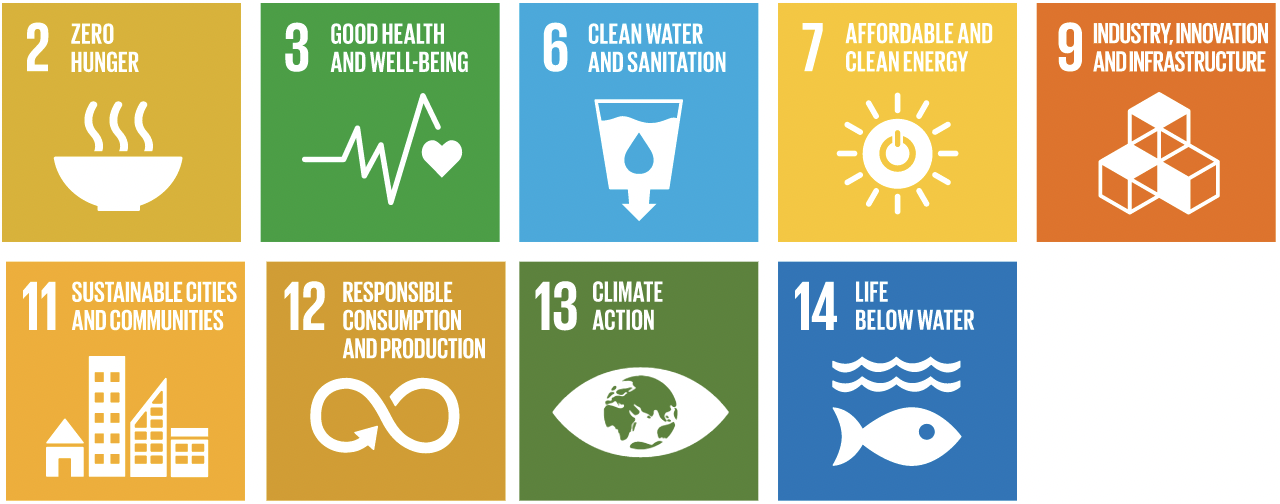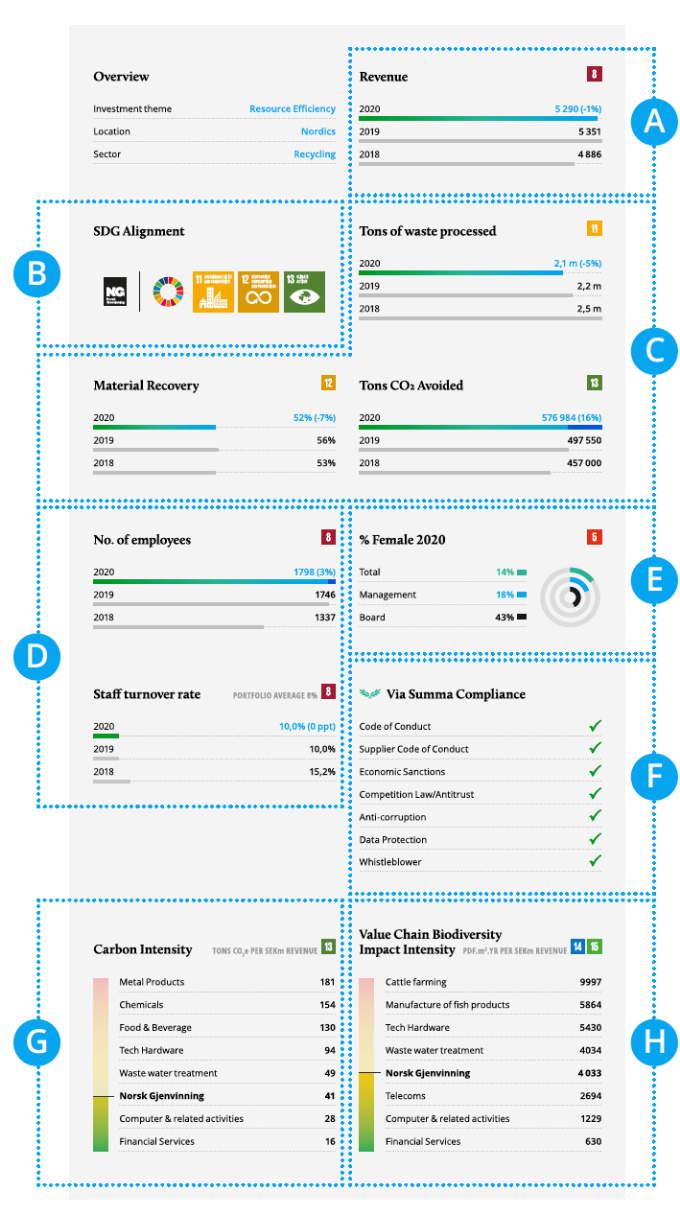Investment themes
Megatrends
Investment themes
Sustainable Development Goals
Portfolio
Impact
Megatrends
Resource scarcity
Population growth
Energy transition
& climate change
Investment themes

Resource Efficiency
Sustainable Development Goals

Portfolio

Impact
Environmental
Megatrends
Ageing demographics
Global population growth
Investment themes

Changing Demographics
Sustainable Development Goals

Portfolio



Impact
Social
Megatrends
Technology disruption
Energy transition
Global populations growth
Investment themes

Tech-Enabled Business
Sustainable Development Goals

Portfolio


Impact
Governance
SDG scorecard & dimensions of impact
Scorecard Elements
The Summa SDG scorecard is intended to provide quantitative insights into the positive outcomes provided by our portfolio companies as well as transparency on potential negative outcomes.

Impact dimensions⁴
At Summa we wish to continually deepen our understanding of impact, improve our management of portfolio value creation and increase the clarity in our communication of outcomes generated by our portfolio companies.
This is the background for the new layout of page two in the following company presentations, where we have broken down the qualitative description of the company impacts into five paragraphs linked to the five dimensions defined by IMP4,5:
- Depending on availability we use either operational output metrics or estimations of stakeholder outcomes as proxies for impact.
- Although this shows only one dimension of diversity directly, it may also be seen as a distant proxy for diversity in a broader sense. For the “management” cateogry we ask that our portfolio companies include Women at all levels; junior, mid-level and senior leadership positions.
- The scale is calibrated to enable a comparison of the companies in our particular portfolio, and the cutoff on the high end may therefore seem somewhat arbitrary. However, if we were to include sectors like power generation or agriculture on the scale, it would make most of our company impacts seem of little significance, which is not the view we wish to present.
- Please see https://impactmanagementproject.com/ for more information on the five impact dimensions
- Impact Management Project

